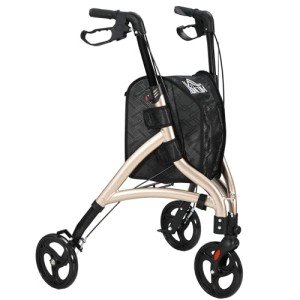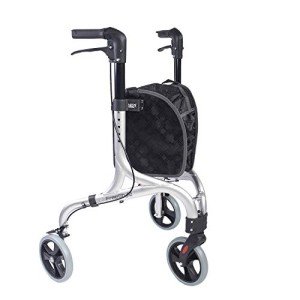- 작성자 Alvin Shaffer
- 댓글 0건
- 조회 545회
- 작성일 2025.06.27
본문
Understanding Adjustable Walkers: A Comprehensive Guide
Adjustable walkers are necessary mobility aids created to supply stability and assistance to individuals with mobility difficulties. They enhance self-reliance, safety, and confidence for people recovering from surgery, handling chronic conditions, or dealing with age-related mobility issues. This post looks into the features, types, benefits, and typical FAQs related to adjustable walkers, offering insights for possible users and caretakers.
What is an Adjustable Walker?
An adjustable walker is a mobility aid that typically features a lightweight frame with four legs, equipped with handgrips for support. It can be adapted to accommodate various heights, ensuring users attain a comfy wrist position while supporting their weight. Adjustable walkers can be found in numerous designs, each customized to particular requirements.
Secret Features of Adjustable Walkers
- Height Adjustment: Most adjustable walkers have telescoping legs, allowing users to easily customize the height to fit their stature.
- Weight Capacity: Different designs accommodate differing weight limitations, catering to a broad market.
- Foldability: Many walkers are collapsible, making them easy to shop and transportation.
- Wheels vs. No Wheels: Some walkers include wheels on the front legs, while others have a standard design without wheels, promoting stability.
- Additional Accessories: Walkers can often be geared up with trays, baskets, or cup holders for added benefit.
| Feature | Description |
|---|---|
| Height Adjustment | Telescoping legs for customized height settings |
| Weight Capacity | Varies by design, supporting various body weights |
| Foldability | Collapsible style for simple transport and storage |
| Wheels | Available in both wheeled and non-wheeled alternatives |
| Additional Accessories | Trays, baskets, and cup holders for user convenience |
Types of Adjustable Walkers
- Standard Walkers: Traditional models with 4 legs. Best for those seeking optimum stability.
- Wheeled Walkers (Rollators): Walkers with two or more wheels, permitting simpler maneuvering.
- Hemi Walkers: Designed for individuals with using one hand, featuring a single arm assistance for added stability.
- Child Walkers: Specifically developed for infants learning to stroll, promoting safety and support throughout early mobility.
Benefits of Using Adjustable Walkers
Boost Independence
- Boosted Mobility: Adjustable walkers permit users to navigate their environments with more ease and self-confidence, promoting a sense of independence.
- Availability: With the ideal walker, users can preserve their way of life and participate in activities they take pleasure in without support.
Injury Prevention
- Stability and Support: Walker users can maintain much better balance and avoid falls, which are especially crucial for seniors and people recovering from surgery.
- Lowered Strain: Proper use of a walker can reduce stress on joints and muscles, reducing the danger of injury throughout mobility.
Convenience and Customization
- Adjustable Settings: Walkers can be customized to each user's height and convenience, providing a more customized experience.
- Extra Features: Options for accessories assist in accommodating individual needs, making it possible for users to bring items while moving.
Expenses and Considerations
The price of adjustable walkers varies depending on features, products, and brand name. Here's an overview of the typical costs connected with different types:
| Walker Type | Typical Cost |
|---|---|
| Standard Walkers | ₤ 50 - ₤ 100 |
| Wheeled Walkers | ₤ 75 - ₤ 200 |
| Hemi Walkers | ₤ 60 - ₤ 150 |
| Baby Walkers | ₤ 30 - ₤ 70 |
Frequently Asked Questions (FAQs)
1. How do I understand which adjustable walker is ideal for me?
The right adjustable walker depends on your specific needs, physical condition, and environment. It's necessary to seek advice from a health care professional to figure out the most appropriate type.
2. Can I adjust the height of any walker?
A lot of adjustable walkers feature a height-adjustment mechanism. However, not all walkers are adjustable. It's essential to take a look at item specs before buying.
3. Are wheeled walkers safe to use?
Yes, wheeled walkers (or rollators) are safe for users who can browse them properly. They frequently consist of brakes for added safety when stationary.

4. How do I care for my adjustable walker?
Routine care includes cleaning up the walker with moderate soap and water, looking for wear on grips and wheels, and ensuring systems run smoothly.

5. Can I take my adjustable walker on public transport?
Yes, numerous adjustable walkers are foldable and designed for simple transportation. However, it's a good idea to inspect the particular standards of the transportation service.
6. Do I need assistance to use an adjustable walker?
Many users can run adjustable walkers separately, especially when effectively fitted to their height. However, those with serious mobility problems might benefit from help.
Adjustable walkers are indispensable tools for boosting mobility, self-reliance, and safety. With a variety of styles and styles, people can discover a walker tailored to their requirements. Caregivers and users alike need to value the importance of speaking with healthcare experts to make informed decisions regarding mobility aids. Understanding the functions, benefits, and considerations of adjustable walkers empowers people to preserve an active lifestyle, enhancing their lifestyle despite mobility difficulties.
댓글목록 0개
등록된 댓글이 없습니다.

